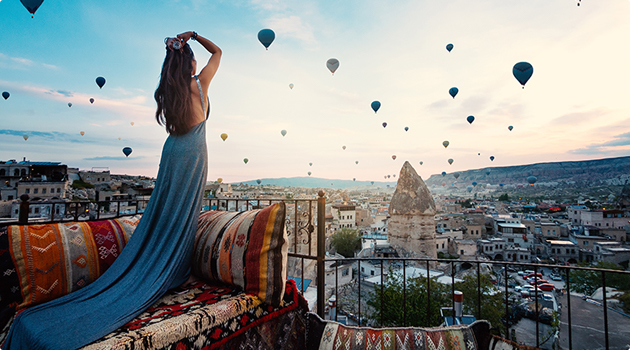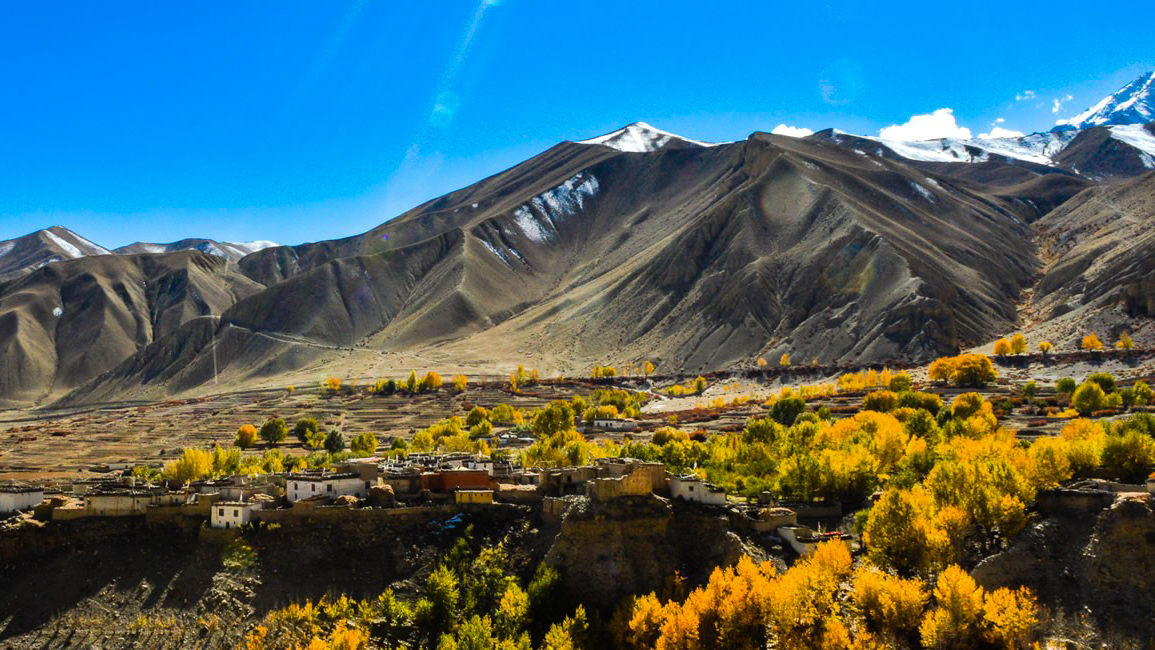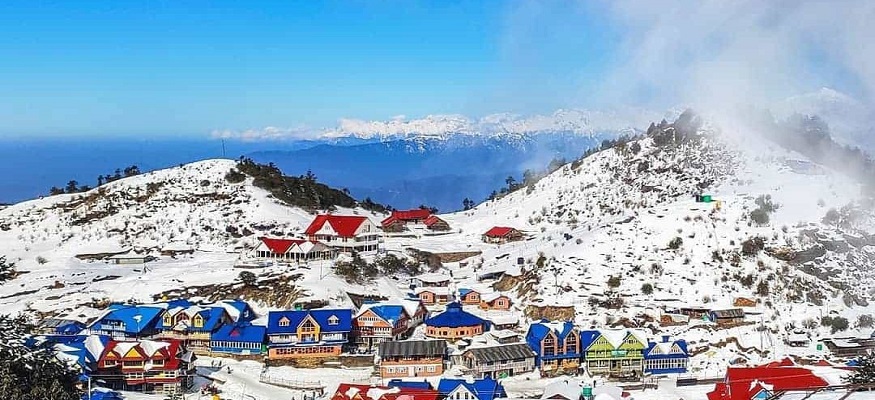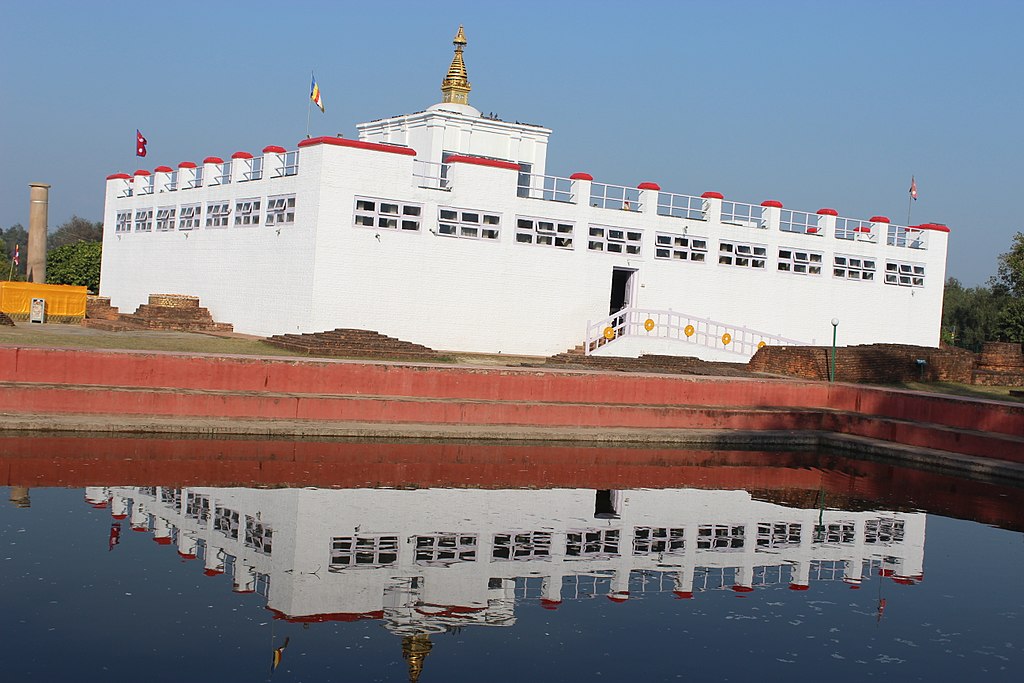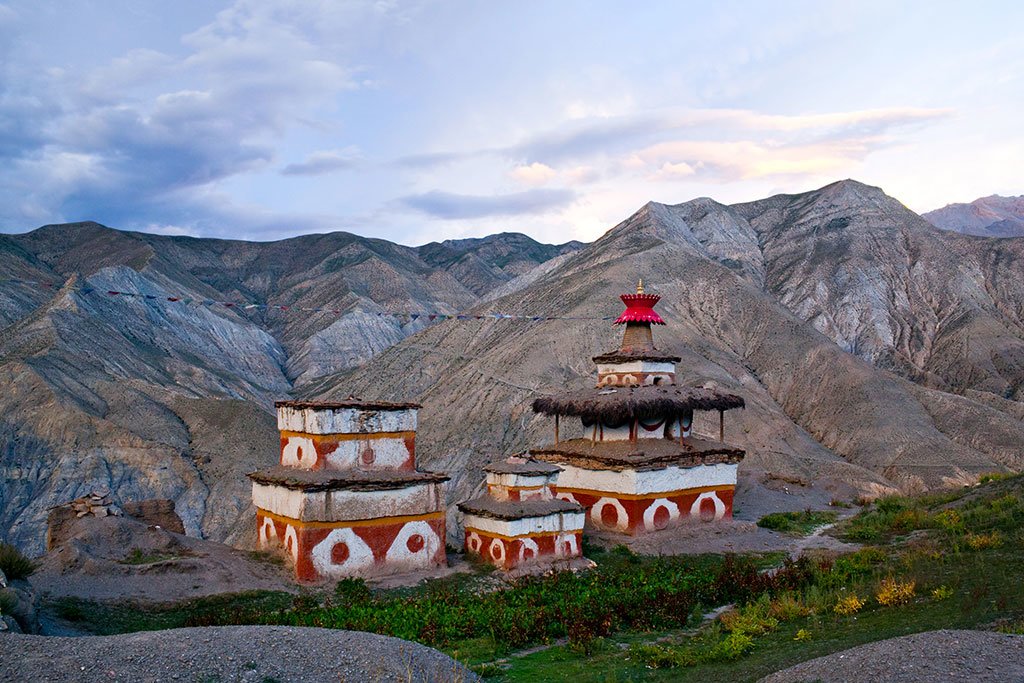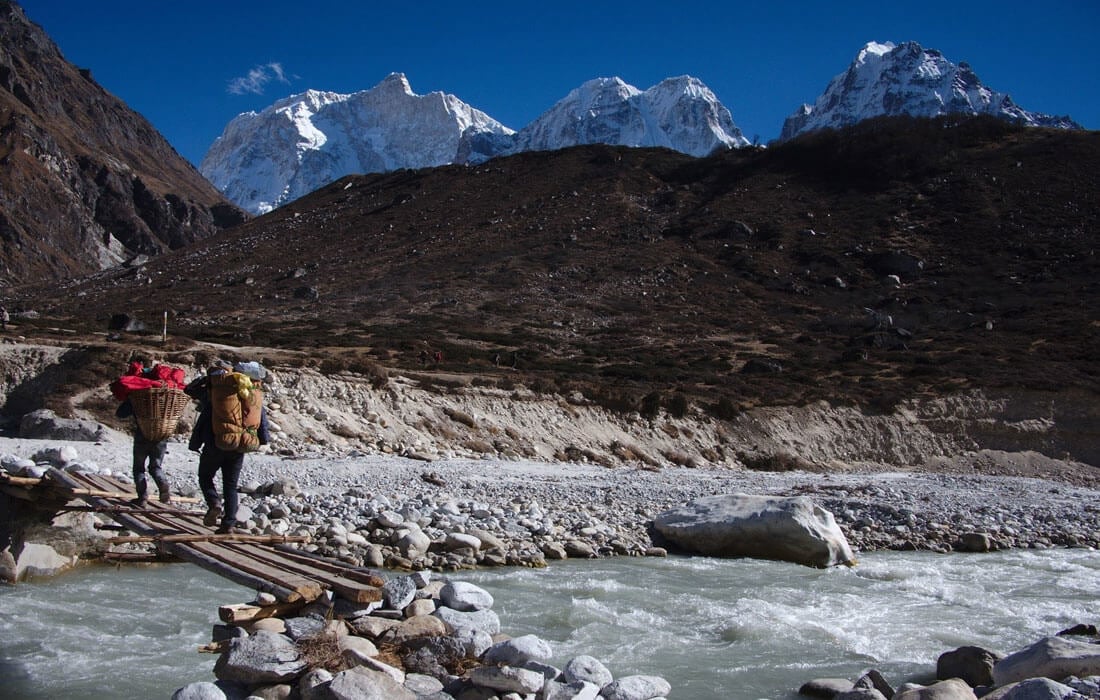 About this Trip
About this Trip
The Langtang Valley Trek represents a perfect balance of accessibility and authenticity, offering an immersive Himalayan experience without requiring the time commitment of more remote treks. What makes this journey extraordinary is its remarkable diversity of landscapes, cultural richness, and relatively gentle elevation profile.
As you ascend from the subtropical forests of the lower valley through bamboo groves and into the alpine terrain, the landscape transforms dramatically with each day. The narrow valley gradually opens into a spectacular U-shaped glacial valley, creating a sense of revelation as the towering peaks of the Langtang range come into full view. The trail follows the Langtang Khola (river), crossing numerous wooden bridges and passing through forests filled with monkeys, colorful birds, and in springtime, brilliant rhododendron blooms.
The cultural dimension of this trek is particularly enriching. The Langtang Valley is home to people of Tamang and Sherpa heritage whose customs and way of life are heavily influenced by nearby Tibet. The villages you'll encounter, particularly Langtang Village (rebuilt after the 2015 earthquake) and the settlement around Kyanjin Gompa, offer insights into Himalayan life that has adapted to both tradition and change. Prayer wheels, mani walls decorated with Buddhist inscriptions, colorful prayer flags, and the ancient Kyanjin Gompa monastery all reflect the deep spiritual traditions of the region.
Physically, the trek challenges participants with steady uphill hiking and adaptation to increasing altitude, but the well-maintained trail and availability of comfortable teahouses make it accessible to moderately fit trekkers. The relatively easy access from Kathmandu makes this an ideal introduction to Himalayan trekking for those with limited time or trekking experience.
Perhaps most uniquely, the Langtang Valley offers a profound sense of resilience and rebirth. Following the devastating 2015 earthquake that severely impacted the region, local communities have rebuilt with remarkable determination. Trekking here not only provides extraordinary natural beauty but also directly supports the livelihood of communities that have shown incredible strength in the face of adversity.
The Langtang Valley Trek represents a perfect balance of accessibility and authenticity, offering an immersive Himalayan experience without requiring the time commitment of more remote treks. What makes this journey extraordinary is its remarkable diversity of landscapes, cultural richness, and relatively gentle elevation profile.
As you ascend from the subtropical forests of the lower valley through bamboo groves and into the alpine terrain, the landscape transforms dramatically with each day. The narrow valley gradually opens into a spectacular U-shaped glacial valley, creating a sense of revelation as the towering peaks of the Langtang range come into full view. The trail follows the Langtang Khola (river), crossing numerous wooden bridges and passing through forests filled with monkeys, colorful birds, and in springtime, brilliant rhododendron blooms.
The cultural dimension of this trek is particularly enriching. The Langtang Valley is home to people of Tamang and Sherpa heritage whose customs and way of life are heavily influenced by nearby Tibet. The villages you'll encounter, particularly Langtang Village (rebuilt after the 2015 earthquake) and the settlement around Kyanjin Gompa, offer insights into Himalayan life that has adapted to both tradition and change. Prayer wheels, mani walls decorated with Buddhist inscriptions, colorful prayer flags, and the ancient Kyanjin Gompa monastery all reflect the deep spiritual traditions of the region.
Physically, the trek challenges participants with steady uphill hiking and adaptation to increasing altitude, but the well-maintained trail and availability of comfortable teahouses make it accessible to moderately fit trekkers. The relatively easy access from Kathmandu makes this an ideal introduction to Himalayan trekking for those with limited time or trekking experience.
Perhaps most uniquely, the Langtang Valley offers a profound sense of resilience and rebirth. Following the devastating 2015 earthquake that severely impacted the region, local communities have rebuilt with remarkable determination. Trekking here not only provides extraordinary natural beauty but also directly supports the livelihood of communities that have shown incredible strength in the face of adversity.

From $0
Price Varies from Group Size
Success
Here goes about why the success toast occurred.
 Itinerary
Itinerary
Arrival in Kathmandu (1,400m)
Kathmandu to Syabrubesi (1,550m)
Syabrubesi to Lama Hotel (2,380m)
Lama Hotel to Langtang Village (3,430m)
Langtang Village to Kyanjin Gompa (3,870m)
Excursion to Tserko Ri (4,984m) or Kyanjin Ri (4,773m)
Kyanjin Gompa to Lama Hotel (2,380m)
Lama Hotel to Syabrubesi (1,550m)
Syabrubesi to Kathmandu
Departure from Kathmandu
 Services
Services
Includes
- Experienced English-speaking trekking guide
- Private Transport (bus or jeep) between Kathmandu and Syabrubesi
- Daily meals on the trek: breakfast, lunch, and dinner
- Teahouse accommodation throughout the trek
- Porter service (1 porter for every 2 trekkers)
- All necessary trekking permits, including Langtang National Park entry fee and TIMS card
- Staff insurance, equipment, and wages
Excludes
- Additional accommodation due to early return or unexpected delays
- Comprehensive travel and medical insurance for the trek
- Gratuities for the guides, porters, and trekking support staff
- International flights and entry visa fees for Nepal
- Personal trekking equipment and gear (sleeping bags, jackets, etc.)
- Extra food and drinks beyond the standard meals provided
- Hot showers and battery charging at teahouses (available for additional fees)
 Good to Know
Good to Know
Train 2-3 months in advance with focus on uphill walking; teahouses offer basic but comfortable accommodation; pack for variable conditions as weather can change rapidly; bring enough cash for the entire trek as there are no ATMs in the region; water purification is essential; electricity is available in most teahouses but may require payment for charging devices; acclimatization is important even on this relatively moderate altitude trek; and respect local customs by dressing conservatively and asking permission before photographing people.
Wildlife Encounters
While trekking, keep an eye out for:
Red panda (endangered and rare, but present in the region), Himalayan tahr and ghoral (mountain goats), Langur monkeys, Various deer species including musk deer, Himalayan black bear (rare sightings), Over 250 bird species including pheasants, cuckoos, and eagles, Numerous butterfly species, Small mammals like pikas and marmots.
 Reviews
Reviews
 FAQs (Frequently Asked Questions)
FAQs (Frequently Asked Questions)
How does the Langtang Trek compare to Everest Base Camp or Annapurna Circuit?
Langtang offers similar Himalayan scenery but requires less time (typically 7-10 days versus 14+ days), reaches lower maximum altitudes (reducing altitude sickness risk), and experiences fewer crowds. The cultural experience is dominated by Tamang influences rather than the Sherpa culture of Everest or the diverse ethnic groups of Annapurna.
What is the status of the region after the 2015 earthquake?
The Langtang Valley was severely impacted by the 2015 earthquake, with Langtang Village completely destroyed by a massive avalanche. Since then, the village has been rebuilt in a slightly different location, trails have been restored, and tourism infrastructure has been reestablished. Visiting the region now not only offers a magnificent trekking experience but also supports the ongoing recovery of local communities.
Do I need special permits for this trek?
You need the Langtang National Park entry permit (approximately $30) and the TIMS card (Trekkers' Information Management System, approximately $10). Unlike some restricted regions in Nepal, Langtang does not require a special limited area permit.
What is the best time of year for this trek?
March to May and October to November offer the best conditions. Spring features spectacular rhododendron blooms and warmer temperatures, while autumn provides the clearest mountain views. The monsoon season (June-September) brings leeches and obscured views, while winter (December-February) brings cold temperatures but can offer a unique, crowd-free experience for properly equipped trekkers.
What type of accommodation can I expect?
Comfortable teahouses exist throughout the route, offering basic but clean private rooms, dining areas with stoves for warmth, and simple bathroom facilities. Most teahouses now offer solar hot showers and electricity for charging devices (usually for an additional fee). While simpler than city accommodations, teahouses in Langtang are generally more comfortable than those in more remote trekking regions.
Is it possible to trek independently in Langtang?
Yes, independent trekking is permitted in Langtang National Park. However, hiring a guide is highly recommended for safety, cultural insights, and employment generation in the region. Solo trekkers must still register with the TIMS system and obtain park permits.
How reliable is the WiFi and phone connectivity?
Basic connectivity exists in most villages along the route, with many teahouses offering WiFi for an additional charge (though connection speeds are very slow). Mobile network coverage extends to most parts of the trek but can be unreliable. It's advisable to download offline maps and essential information before departing.
How much should I budget for the trek?
Beyond the package cost, budget approximately $15-25 per day for any additional expenses such as hot showers, device charging, snacks, bottled beverages, and tips. Prices in teahouses increase slightly with altitude due to transportation costs.
Is altitude sickness a concern on this trek?
The moderate elevation profile of the trek reduces altitude sickness risks compared to higher treks, but it remains a potential issue, particularly for those ascending to Tserko Ri. The itinerary incorporates appropriate acclimatization, but trekkers should familiarize themselves with altitude sickness symptoms and be prepared to descend if necessary.
How physically fit do I need to be?
Moderate fitness is sufficient for the main trek, though more strenuous fitness is required for the optional high viewpoints. Being able to walk 5-7 hours daily with a light daypack over varied terrain is adequate preparation. Including uphill walking in your pre-trek training is particularly beneficial.
